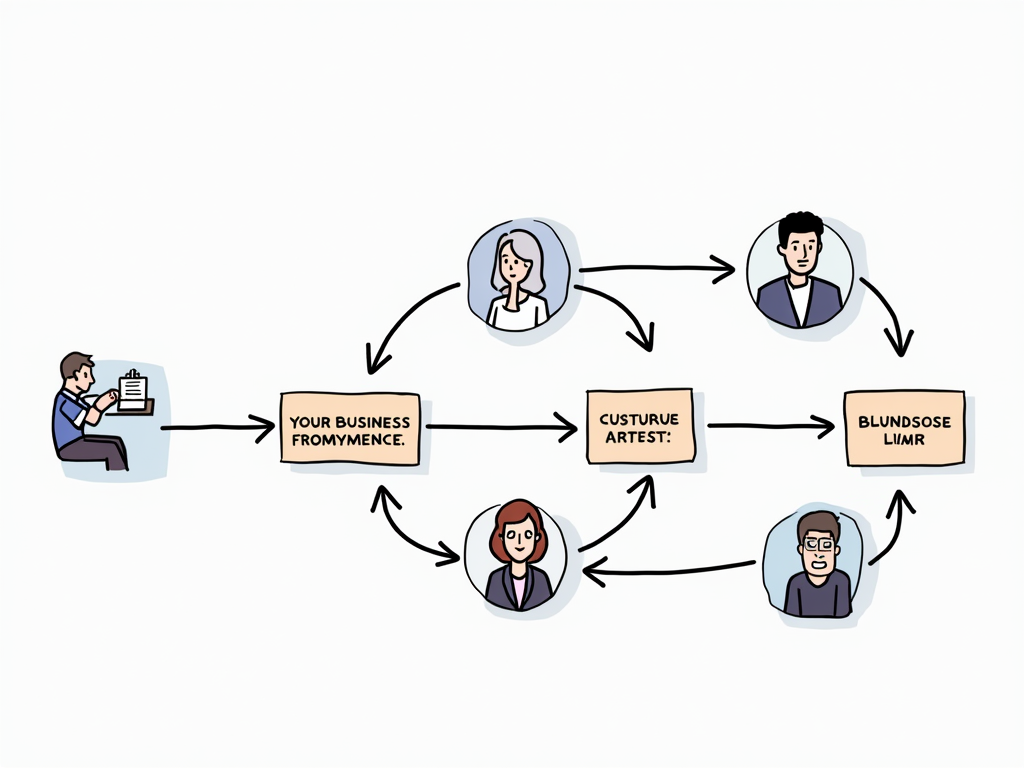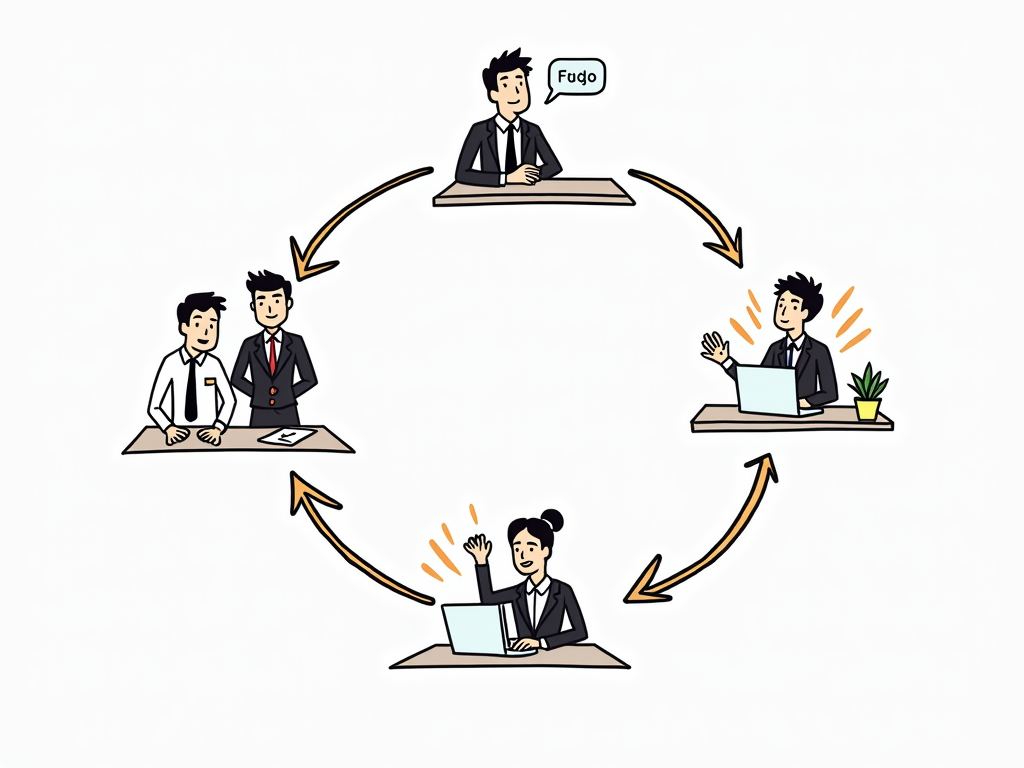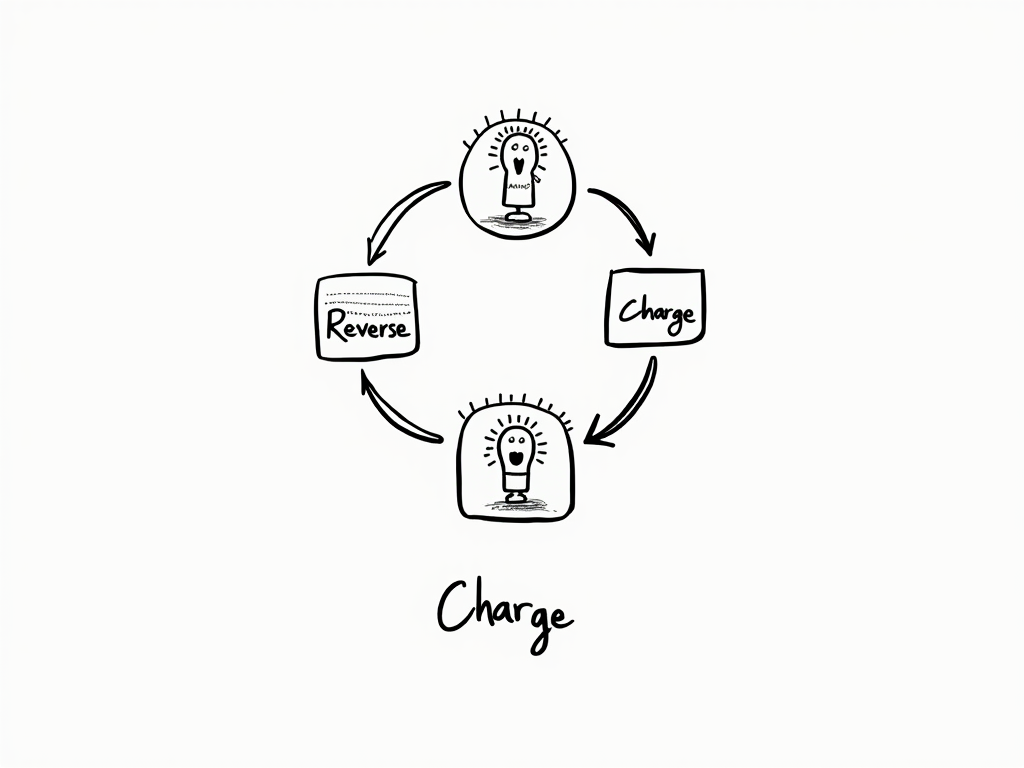
Freelancer Taxes in Estonia: Your Complete Guide to Self-Employed Income Reporting
Reading time: 15 minutes
Table of Contents
- Introduction to Freelancing in Estonia
- Understanding Your Tax Status
- Registration Options for Freelancers
- Income Tax Obligations
- Social Tax and Social Benefits
- VAT Registration and Reporting
- Allowable Deductions and Expenses
- Tax Reporting Process
- Digital Tools for Estonian Freelancers
- Common Mistakes and How to Avoid Them
- Conclusion
- Frequently Asked Questions
Introduction to Freelancing in Estonia
Ever felt the pull toward Estonia’s digital landscape as a freelancer? You’re certainly not alone. Estonia has positioned itself as Europe’s digital hub, offering a streamlined approach to business and taxes that’s particularly appealing to the self-employed.
The Estonian tax system might seem complex at first glance, but it’s actually designed with clarity and efficiency in mind. Let’s break down what makes it unique: transparent flat tax rates, a digital-first approach to compliance, and a system that genuinely encourages entrepreneurship rather than hindering it.
Here’s the straight talk: navigating Estonian freelance taxes isn’t about drowning in paperwork—it’s about understanding the strategic options available to you and making informed decisions that benefit your specific situation.
Understanding Your Tax Status
Before diving into tax reporting procedures, you need absolute clarity on your tax status in Estonia. This foundational understanding will determine everything from your reporting obligations to available deductions.
Tax Residency Criteria
Estonian tax residency isn’t just about where you physically reside—it’s a precise determination based on specific criteria:
- 183-day rule: Staying in Estonia for at least 183 days during a 12-month period automatically makes you a tax resident.
- Permanent home test: Having your primary residence in Estonia indicates tax residency.
- Center of vital interests: When your economic and personal ties are stronger to Estonia than other countries.
Consider Anna’s case: A digital nomad from Germany who spent 4 months in Estonia, 3 months in Finland, and 5 months in Latvia. Despite her mobility, she maintained her permanent apartment in Tallinn and conducted most of her business with Estonian clients. The Estonian Tax Board classified her as an Estonian tax resident based on her center of vital interests, despite not meeting the 183-day threshold.
Non-Resident Freelancers
If you don’t meet the residency criteria, you’ll be considered a non-resident for tax purposes. This means:
- You’re only taxed on income sourced from Estonia
- Different tax treaties may apply based on your country of residence
- Access to certain deductions and benefits might be limited
As Jüri Lepp, Estonian tax consultant, explains: “Non-resident freelancers often overlook the protection provided by tax treaties. These agreements can prevent double taxation and sometimes offer more favorable conditions than domestic legislation alone.”
Registration Options for Freelancers
Estonia offers multiple registration paths for freelancers, each with distinct tax implications. Your choice here will significantly impact your administrative burden and financial outcomes.
Sole Proprietor (FIE)
Registering as a Füüsilisest isikust ettevõtja (FIE) means operating as a sole proprietor, where you and your business are legally considered the same entity.
Key considerations:
- Straightforward setup through the Business Register (costs approximately €20)
- Personal liability for business debts
- Option for cash-basis or accrual accounting
- Social tax obligations (33%) apply to business income
- Opportunity to make advance social tax payments
Private Limited Company (OÜ)
Establishing an Osaühing (OÜ) creates a separate legal entity from yourself, offering certain protections and tax planning advantages.
Key considerations:
- Minimum share capital of €2,500 (can be deferred)
- Limited liability protection
- Corporate income tax only applies to distributed profits (0% on retained earnings)
- Salary payments subject to employment taxes
- More complex accounting requirements
Simplified Business Income (ETI) Account
For those seeking maximum simplicity, the Ettevõtlustulu lihtsustatud maksustamise (ETI) account offers a streamlined approach for specific types of income.
Key considerations:
- Available for natural person-to-natural person services and goods sales
- Revenue limit of €40,000 annually
- Flat tax rate of 20% (income up to €25,000) or 40% (income between €25,000-€40,000)
- No expense deductions allowed
- Includes both income and social tax obligations
| Registration Option | Setup Complexity | Tax Rate | Expense Deductions | Liability Protection |
|---|---|---|---|---|
| Sole Proprietor (FIE) | Low | 20% + 33% social tax | Yes, business expenses | No |
| Private Limited Company (OÜ) | Medium | 0% on retained earnings, 20% on distributions | Yes, comprehensive | Yes |
| ETI Account | Very Low | 20%/40% (all-inclusive) | No | No |
| Natural Person (no registration) | None | 20% income tax | Limited | No |
Income Tax Obligations
Estonia’s income tax system operates on a flat rate principle, with some important nuances for different types of freelancers.
The standard income tax rate is 20%, applied to taxable income after allowable deductions. For freelancers, income tax obligations vary based on your registration choice:
As an unregistered individual: Your freelance income is taxed as “other income” at 20%, with limited expense deduction possibilities.
As a Sole Proprietor (FIE): You’ll pay 20% income tax on your business profit (income minus expenses). The tax-free income threshold (€7,848 in 2023) applies, but remember this is shared across all your income sources.
As an OÜ owner: The company pays 0% on retained earnings and 20% (or effectively 20/80 of the net amount) on distributions. You’ll also pay 20% income tax on any salary you receive, minus the tax-free threshold.
Pro Tip: The tax-free threshold decreases gradually for annual incomes exceeding €25,200, reaching zero for incomes above €40,080. Plan your income withdrawals strategically to maximize this benefit.
Social Tax and Social Benefits
Social tax in Estonia is a critical component of the tax landscape for freelancers, directly impacting your social benefits eligibility.
Social Tax Structure
At 33%, Estonia’s social tax rate may initially seem high, but it’s important to understand what it provides:
- 20% goes toward state pension insurance
- 13% funds health insurance coverage
For sole proprietors (FIE), social tax applies to your business income after expenses, with a minimum obligation based on the monthly minimum wage (€725 in 2023), resulting in a minimum quarterly payment of approximately €723.
Märt, a freelance designer operating as an FIE, experienced this firsthand. During his first year with minimal income, he still needed to pay the minimum social tax amount, which created unexpected cash flow challenges. “I wish I’d understood that social tax minimums apply regardless of profitability,” he shared. “I would have budgeted differently or considered alternative registration options.”
Health Insurance Coverage
Your social tax payments directly determine your health insurance eligibility. For sole proprietors, health insurance coverage begins after your business has been operational for at least three months and you’ve met the minimum social tax obligations.
OÜ owners typically secure health insurance through board member status or employment contracts, which requires meeting minimum social tax payments based on at least 70% of the average Estonian wage.
As tax advisor Liina Kask notes: “Many freelancers neglect to factor health insurance into their business structure decisions. This is a critical oversight that can lead to significant gaps in coverage and unexpected healthcare costs.”
VAT Registration and Reporting
Value-Added Tax (VAT) represents another potential obligation for Estonian freelancers, with distinct thresholds and requirements.
VAT registration becomes mandatory once your taxable turnover exceeds €40,000 within a calendar year. However, you can also register voluntarily before reaching this threshold if it makes financial sense for your business model.
Estonian VAT operates at a standard rate of 20%, with reduced rates of 9% for certain categories like accommodation and books. As a VAT-registered freelancer, you’ll need to:
- Add VAT to your invoices for Estonian and non-VAT registered EU clients
- Submit monthly VAT declarations by the 20th of the following month
- Maintain detailed records of input and output VAT
- Apply reverse-charge mechanisms for certain cross-border transactions
Strategic consideration: For freelancers with significant business expenses, early VAT registration might be advantageous to reclaim input VAT. Conversely, if most of your clients are VAT-registered businesses, registration has minimal net impact since they can reclaim the VAT you charge.
Allowable Deductions and Expenses
Understanding the full range of allowable deductions is essential for minimizing your tax burden as an Estonian freelancer.
Business Expense Criteria
The Estonian Tax and Customs Board applies clear criteria for business expense deductibility:
- Expenses must be directly related to business activities
- They must be properly documented with invoices or receipts
- Personal and business expenses must be clearly separated
- Expenses must be reasonable and necessary for generating income
For sole proprietors, common deductible expenses include:
- Home office expenses (proportional to business use)
- Professional development costs
- Business travel and accommodation
- Equipment and supplies
- Software subscriptions and digital tools
- Professional services (accounting, legal)
- Business insurance premiums
Special Deduction Rules
Estonia offers some specific deduction provisions worth noting:
- Business car usage: Document business trips in a logbook to deduct fuel and maintenance costs proportionally. Alternatively, for mixed-use vehicles, you can apply a simplified method deducting 80% of all car-related expenses.
- Home office: Calculate the percentage of your home used exclusively for business, then apply that percentage to utilities, internet, and rent/mortgage interest.
- Entertainment expenses: Limited to 50% deductibility with a maximum of €32 per person.
- Special deferral account: Sole proprietors can defer income tax by transferring profits to a special account designated for business investments.
Maria, a freelance translator, shared her experience: “I initially missed many legitimate deductions, especially related to my home office and professional development. After consulting with an accountant, I realized I could reduce my taxable income by nearly 30% through proper expense tracking and allocation.”
Tax Reporting Process
Estonia’s digital-first approach makes tax reporting relatively straightforward, but understanding the specific requirements for freelancers is essential.
Filing Deadlines and Methods
Key deadlines to mark in your calendar:
- Annual income tax return: Due between February 15 and April 30 following the tax year
- VAT declarations: Monthly, due by the 20th of the following month
- Social tax advance payments (for FIE): Quarterly, due by the 15th of the third month of each quarter
- Annual report (for OÜ): Due within six months after the financial year ends
Estonia’s e-Tax system (e-MTA) is the primary platform for submitting all tax-related documentation. The user-friendly interface guides you through the necessary forms and calculations, often pre-filling information based on previously submitted data.
Documentation Requirements
Proper record-keeping is non-negotiable for Estonian freelancers. You’ll need to maintain:
- Income records (including all invoices issued)
- Expense receipts and invoices
- Bank statements showing business transactions
- Logbooks for business vehicle usage
- Contracts with clients and service providers
- Evidence supporting business trips and meetings
For sole proprietors using cash-basis accounting with annual turnover below €15,000, simplified accounting is permitted. However, once you exceed this threshold or opt for accrual accounting, more comprehensive bookkeeping becomes mandatory.
Pro Tip: The Estonian Tax Board accepts digital documentation, so scanning receipts and organizing them electronically is perfectly valid and highly recommended for easier management.
Digital Tools for Estonian Freelancers
Estonia’s digital ecosystem offers numerous tools to simplify tax compliance for freelancers.
The e-Residency program provides a digital identity and access to Estonia’s e-services, allowing non-residents to establish and manage Estonian businesses remotely. This has created a thriving ecosystem of support services:
- Accounting software: Platforms like Merit Aktiva, SimplBooks, and Finbite offer Estonian-specific accounting solutions with tax report integration.
- E-invoicing: Services such as Invoice.ee and Erply streamline the invoicing process in compliance with Estonian requirements.
- Business banking: Digital banks like LHV, Wise Business, and Revolut Business provide tailored solutions for freelancers and entrepreneurs.
Tomas, a Finnish e-resident freelance developer, describes his experience: “The integration between Estonia’s tax system and digital service providers creates an almost seamless compliance experience. I spend about 80% less time on administrative tasks compared to my previous setup in Finland.”
Common Mistakes and How to Avoid Them
Even the most diligent freelancers can fall into common tax pitfalls in the Estonian system. Here’s how to avoid them:
Misclassification of Income and Expenses
Erroneously categorizing personal expenses as business costs is a frequent error that can trigger audits. The Estonian Tax Board specifically looks for:
- Personal travel disguised as business trips
- Family meals categorized as business meetings
- Personal asset purchases recorded as business expenses
Prevention strategy: Maintain separate bank accounts and credit cards for business and personal use. For mixed-use items, document the business percentage meticulously and apply it consistently.
Missing Registration Requirements
Another common oversight is failing to register for VAT when crossing the €40,000 threshold. This can result in retroactive tax obligations plus penalties.
Prevention strategy: Set up regular revenue monitoring with alerts when approaching the threshold. Consider voluntary registration if you’re consistently near the limit.
As tax consultant Kristjan Tamm warns: “The most expensive mistakes happen through omission rather than commission. Missing registrations, overlooked deadlines, and neglected documentation create far more problems than actively pursuing an aggressive tax strategy.”
Conclusion
Navigating Estonia’s tax system as a freelancer doesn’t need to be overwhelming. The country’s digital infrastructure, transparent tax rates, and entrepreneurial focus create genuine advantages for self-employed professionals who take the time to understand their obligations.
The key takeaways for successful tax management in Estonia include:
- Choosing the right registration format based on your specific circumstances
- Understanding the substantial impact of social tax on both your obligations and benefits
- Leveraging Estonia’s digital ecosystem to streamline compliance
- Maintaining meticulous documentation and separation of business and personal finances
- Considering long-term implications of your tax strategies beyond immediate obligations
With proper planning and execution, Estonia’s tax framework can become a competitive advantage rather than an administrative burden. The system rewards those who approach it strategically and maintain consistent compliance practices.
Ready to transform your tax compliance from a necessary evil into a business strength? Start by assessing your current status and identifying the specific next steps for your situation. The effort invested now will pay dividends through reduced stress, lower tax liabilities, and a stronger foundation for your freelance business.
Frequently Asked Questions
How does Estonia tax foreign-sourced freelance income?
For Estonian tax residents, worldwide income is generally taxable in Estonia, though foreign tax credits prevent double taxation. If you’re an Estonian tax resident with foreign-sourced freelance income, you must declare this on your annual tax return. Estonia has tax treaties with over 60 countries that may provide specific provisions affecting how this income is taxed. The specific treatment depends on the nature of the income and the provisions of any applicable tax treaty. In most cases, you can claim a credit for foreign taxes paid, effectively ensuring you don’t pay tax twice on the same income.
Can I switch between different registration types as my freelance business evolves?
Yes, you can switch between different registration types, but timing and planning are crucial. Transitioning from being an unregistered freelancer to a sole proprietor (FIE) can happen at any time by registering with the Commercial Register. Converting from FIE to an OÜ (private limited company) is more complex and typically involves closing the FIE and establishing a new legal entity. This process has tax implications, particularly regarding the transfer of assets and potential VAT adjustments. The best time for such transitions is usually at the end of a financial year to minimize accounting complications. Always consult with a tax advisor before making such changes to ensure you understand all implications and required procedures.
What are the consequences of late or incorrect tax filings in Estonia?
Estonia imposes both financial penalties and potential long-term consequences for tax compliance failures. Late tax payments incur interest of 0.06% per day (approximately 22% annually). For late or missed declarations, penalties can range from €300 to €3,200, depending on the severity and recurrence. Beyond immediate penalties, non-compliance can trigger tax audits, damage your credit rating, and impact your ability to participate in public procurement processes. For e-residents, serious tax violations could ultimately affect residency status. The Estonian Tax Board typically sends reminders before applying penalties, and they offer reasonable payment arrangements for those with temporary difficulties. The system is designed to encourage compliance rather than punish honest mistakes, but repeated or deliberate non-compliance is treated seriously.



